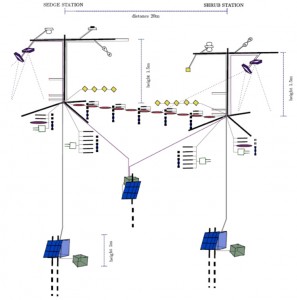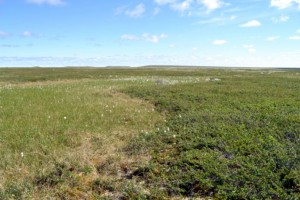by Inge Juszak
Kytalyk, July 2, 2013
Very north (71°) and very east (148°) Siberia is composed of lots of permafrost, wetlands and patterned vegetation. That’s why I join the mosquitoes this summer in Kytalyk. I’m interested in assessing the influence of vegetation, mainly sedges and dwarf-shrubs, on the energy balance of the soil. While the sedges are supposed to reflect more solar radiation back to the sky, the shrubs might cool the surface by shading. I want to measure both components and find out if this is true for the whole summer. Further, to investigate if vegetation has an effect on soils, I measure also active layer thickness. That is the depth of mud and water on top of the frozen soil (the activity is walking through it). This depth is the final result of the energy balance, the more energy available, the deeper the active layer. In addition to the radiation measurements I’ll have some sensors for air and soil temperature, soil heat flux and moisture. I’ll count the leaves of my plants, too. That will be the hardest task to perform, probably, but I will need this information to compare different plots. Based on extended observations around the area, I will test if the plots with all the sensors are nicely representative of all shrubs and sedges in the area.

Setup of the energy balance system at Kytalyk being placed on two contrasting vegetation types, namely sedges and dwarf shrubs. Sensors include above-ground short- and long-wave radiometers, time-lapse cameras following phenology changes, as well as below-ground temperature sensors. The system is solar energy powered and data are continuously stored on two data loggers (Graph: I. Juszak, 2013).

On the left a sedge (mainly Eriophorum angustifolium) patch, on the right a dwarf shrub patch dominated by Betula nana is seen (Photo: G. Schaepman-Strub, July 2012).
This project is funded through the Swiss National Science Foundation (SNSF), contributing to the URPP GCB Siberia activities.
